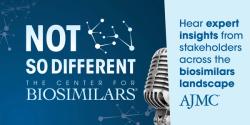© 2025 MJH Life Sciences™ and The Center for Biosimilars - Biosimilars, Health Economics & Insights. All rights reserved.
Rising Drug Prices Cited for Most Biologic Spending Growth
Postmarket drug price changes alone accounted for most of the recent spending growth on biologics, and manufacturers’ rebates had little impact, according to an abstract presented at the American College of Rheumatology’s 2019 meeting, being held in Atlanta, Georgia, this week.
Postmarket drug price changes alone accounted for most of the recent spending growth on biologics, and manufacturers’ rebates had little impact, according to an abstract presented at the American College of Rheumatology (ACR)’s 2019 meeting, being held in Atlanta, Georgia, this week.
Researchers used Medicare Parts B and Part D, as well as Medicaid drug spending data, for the years 2012 to 2016, and included all biologics with FDA approval for 1 or more rheumatic diseases through the end of 2014.
For each biologic and calendar year, the researchers extracted total annual spending and number of recipients, claims, and doses dispensed, and then calculated the drug unit price or average cost per dose.
For the statistical analysis, they calculated 5-year changes in total spending and unit prices for each biologic and in aggregate after adjusting for general inflation to 2016 dollars.
They isolated the contributions of 4 sources of spending growth:
- Drug prices
- Uptake
- Mean number of doses per claim
- Annual number of claims per recipient for each biologic
The analysis included statutory Medicaid rebates, as these decrease public spending, and both excluded and included Medicare rebates, which are paid by drug manufacturers to pharmacy benefit managers (PBMs) and Part D plans, but do not directly impact patient or taxpayer spending. They used time-varying rebates reported by the Congressional Budget Office.
From 2012 to 2016, annual spending by US public programs and beneficiaries nearly doubled from $5.3 billion to $10.3 billion for the biologics included in the study: adalimumab, etanercept, ustekinumab, abatacept, certolizumab, infliximab, tocilizumab, rituximab, abatacept, anakinra, belimumab, and golimumab.
Medicare Part D drug prices rose by a mean of 52%; Medicare Part B’s mean increase was 20%.
Controlling for general inflation, unit price increases alone accounted for 56%, or $1.7 billion of the 5-year, $3.0 billion spending increase within Part D.
Increased uptake accounted for 37% or $1.1 billion. After they accounted for time-varying rebates, price hikes for these drugs were still responsible for 53%, or $1.4 billion of the Part D spending increase.
Adalimumab and etanercept were prescribed to the largest numbers of Part D beneficiaries and had the biggest unit price increases. Medicaid spending and price trends were similar to Part D.
Price increases drove most of the spending growth for the oldest Part B drugs: rituximab, abatacept, and infliximab.
Increase in uptake factored into spending growth for the 5 newer drugs—golimumab, ustekinumab, tocilizumab, certolizumab, and belimumab.
Public policy interventions that target price increases, particularly for Part D, may help mitigate public-payer drug spending and out-of-pocket costs for the elderly and disabled beneficiaries who use biologics.
Just last week, a study in Health Affairs reported that seriously ill Medicare beneficiaries are struggling with financial hardship when it comes to paying for healthcare, largely due to drug pricing. The report looked at both beneficiaries in traditional Medicare as well as Medicare Advantage and also Medicaid.
“The potential drivers of biologic spending increases have different implications for patient and taxpayer expenditures, and ways to control costs,” said Natalie McCormick, PhD, postdoctoral fellow at Massachusetts General Hospital and Harvard Medical School, in a statement.
“If more patients are receiving biologics, total spending may increase, but the average costs for each patient may not. In contrast, price increases can have a considerable impact on patients’ out-of-pocket costs, as biologics are in specialty tiers where patients pay a percentage of the list price, not a copayment,” added McCormick, the study’s lead author.
It is also already known that high costs can affect patient adherence, she said. In addition, it is important for rheumatologists and patients to discuss costs and consider options so that treatment can be accessed, she added.
“We did not have access to individual-level data in this study, but would like to investigate how price increases may impact patients’ out-of-pocket costs and adherence to therapy over the long term, and which diagnoses had the biggest increases in biologic uptake,” said McCormick. “It will also be interesting to assess the impact of biosimilars on public spending.”
Reference
McCormick N, Wallace Z, Sacks C, Hsu J, Choi H. Decomposition analysis of spending and price trends for biologic anti-rheumatic drugs in Medicare and Medicaid. Presented at: The American College of Rheumatology Annual Meeting, November 8-13, 2019; Atlanta, Georgia. Abstract 2731.
Related Content:



